Research Project Index
-
-
-
-
-
-
-
-
-
Exploring the relationship between river restoration and flood risk management
-
Development of behavioral deterrents for power stations
-
Investigating novel uses of electricity in freshwater ecosystems
-
3D Mapping of Geometrically Complex Seafloor infrastructures using Marine Vehicles
-
Hydrant Dynamics for Leak Detection
|
Developing environmentally sensitive hydropower in the UK: investigating and mitigating impacts on freshwater fisheries
 James Miles James Miles
I graduated with a BSc in Biology from the University of St Andrews in 2014 and continued on to do an MSc in Marine Mammal Science. In 2016, I started a PhD in Sustainable Infrastructure Systems at the University of Southampton.
My research interests cover the ecological impact of human disturbance, animal behaviour and underwater acoustics. Currently, my research focuses on how human activities, in particular the development of renewable energy, can affect animal behaviour and how animals use cues in their environment to navigate. I am excited to work alongside the renewable energy industry throughout my PhD.
My research project will be on small scale hydropower facilities can provide a clean and reliable energy source to help achieve societies growing energy needs. However, the associated dams and weirs are unfamiliar obstacles to migrating fish species, altering the environment and the natural cues used by fish to navigate.
The primary aim of my project is to quantify the influence of small-scale hydropower facilities on the movement and survival of freshwater fish. A secondary aim is to develop recommendations for potential mitigation options to protect fish at small-scale hydropower sites.
Project funders: NERC
Project details: A Natural and Environmental Research Council funded CASE PhD studentship to study the impact of small-scale hydropower on migratory fish. The studentship duration is 4 years with the first year dedicated to skills development as part of the EPSRC funded Centre for Doctoral Training in Sustainable Infrastructure Systems. The period of research conducted between years 2-4 will be based partly with the case partner and at the University of Southampton.
The primary aim of the project is to quantify the influence of small-scale hydropower facilities on the movement and survival of freshwater fish of high economic and conservation concern. A secondary aim is to develop recommendations for potential mitigation options to protect fish at small-scale hydropower sites should negative effects be identified. Telemetry techniques will be used in the field to quantify the probability of passage through the turbines and associated injury rates and mortality of adult and juvenile life-stages using a combination of telemetry techniques. Second order effects, including delay and avoidance behaviour exhibited in response to acoustic and hydrodynamic conditions encountered at the hydropower facilities, will be assessed. Fine-scale controlled experiments will be conducted to further quantify fish response to acoustic and hydrodynamic conditions replicated. |
Modelling the influence of flow and other environmental factors on the migration of Atlantic salmon in chalk streams
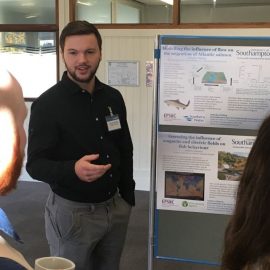 Nicholas Wilding Nicholas Wilding
Nicholas graduated from Loughborough University with a BSc (Hons) in Geography (2012-2015) and a Masters degree in Environmental Monitoring for Management (2015-2016). Previous research has looked to identify the influence of flow permanence and streambed drying (natural hydrological controls) on the community composition of aquatic macroinvertebrates in UK chalk streams, as well as the role of groundwater abstraction practices on macroinvertebrate communities inhabiting temporary rivers for the same region.
Nicholas’ research interests centre around the influence of shifting environmental variables on aquatic fauna, particularly in response to climate change and impact of the Anthropocene, and furthermore, the influence of aquatic fauna on the environment and its processes (ecogeomorphology).
In 2016 Nicholas began an Integrated PhD in Sustainable Infrastructure Systems (CDT-SIS). His project looks to identify the influence of flow and other environmental variables on the migration of Atlantic salmon in chalk streams.
Project funders: Southern Water
Project Details: In collaboration with Southern Water, this is an EPSRC Centre for Doctoral Training in Sustainable Infrastructure Systems (CDT-SIS) funded PhD studentship to study the influence of flow and other environmental factors (e.g. temperature) on the migratory behaviour of Atlantic salmon (Salmo salar). The studentship duration is 4 years with the first year dedicated to skills development as part of the EPSRC funded Centre for Doctoral Training. The period of research conducted between years 2-4 will take a modelling based approach to enhance understanding of how flow and multiple other environmental and anthropogenic factors influence the migration of Atlantic salmon.
The Atlantic salmon is an iconic species of high conservation and economic value. Although river flow regime is recognised as being an important factor likely to influence salmon migration, habitat quality and connectivity, and ultimately productivity, the relationship between them have proven difficult to quantify, and disentangle from multiple other confounding variables. This is especially true for southern English chalk streams which exhibit unique hydrological characteristics and have experienced centuries of anthropogenic modification and management. This project will investigate the relationships between salmon migration and river flows in Southern English chalk streams. Using a combination of modelling and analysis of historic data sets the influence of flow and other factors, including anthropogenic pressures and management regimes, on salmon movements will be described. Alternative flow management and climate change scenarios will be considered in an attempt to predict future response. The information obtained is intended to inform those involved with the operational practice and planning of river and fisheries management in southern England. |
Saving the European Eel: Development of an “Acoustic Scarecrow
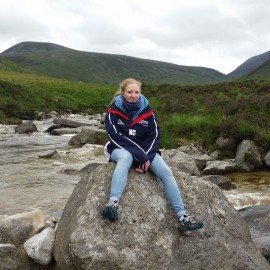 Helen Currie Helen Currie
I graduated from the University of Newcastle upon Tyne in 2010 with joint honours Biology & Psychology BSc (Hons). In 2013 I progressed my studies at the Queen’s University of Belfast, graduating with an MSc in Animal Behaviour and Welfare. My research project looked at the effects of anthropogenic noise on avian bioacoustics. Upon graduation I worked back in Newcastle University, interning as a research assistant at the ‘Centre for Behaviour and Evolution’ within the ‘Institute of Neuroscience’. I joined the iPhD CDT-SIS programme at the University of Southampton in September 2015 (sponsored by NERC and Fishtek).
My main interests are in animal communication (particularly bioacoustics), and how environmental and genetic effects influence differences in behaviour. I am especially interested in the ecological impacts of anthropogenic structures and how animals have to adapt in accordance with them in order to survive.
Project Funders: NERC
Project Details: European eel recruitment has decreased by more than 90% since the 1980s leaving the species endangered and populations below sustainable conservation limits. A number of factors have been attributed to the decline, including the impact of abstraction at water off-takes (e.g. at electricity power stations and water supply plants) into which migrating eels may be entrained. In an attempt to reverse this trend, the Eels (England and Wales) Regulations 2009 require that those who are responsible for operating a diversion structure capable of abstracting at least 20 cubic metres of water per 24 hours must be compliant by providing a fine-mesh physical screen (e.g. 1-3 mm mesh size). The translation into policy of environmental legislation passed to address concerns over seriously reduced eel populations creates a significant challenge for development of energy and water resource infrastructure. Traditional physical screens to prevent fish entering water intakes are not fit for purpose when applied to juvenile eels as they are incapable of blocking small life stages easily entrained through the screens. A more effective alternative to physical screening systems is required. The efficiencies of other options, e.g. “behavioural screens” that attempt to manipulate fish movement, are highly variable and site dependent, and tend to be lower than that of traditional physical devices. Thus there is an urgent need to develop novel behavioural devices as an alternative to traditional technology. To do this, it is necessary to return to basics and address the lack of knowledge about fish response to abiotic stimuli.
We wish to utilise the world-leading expertise in fish biology and acoustics to develop an “acoustic scarecrow” that will deter eel from the water inlets without harming them. To achieve this we must advance understanding of fish response to sound.
This NERC funded studentship will involve field and laboratory work conducted in collaboration with the Environment Agency to develop understanding of eel response to sound. The results will help design behavioural screening and attraction devices to help off-set the impact of river engineering while protecting aquatic habitats and biodiversity. |
Quantifying fish response to acoustic bubbles in fresh and saline water: the pathway to effective “Scarefish” technology
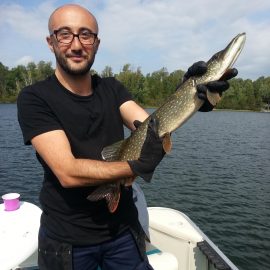 Nicholas Flores Martin Nicholas Flores Martin
I graduated from the University of Malta with a BSc (Hons) in Chemistry and Biology (2004 – 2008), and studied Oceanography to Masters level (2010 – 2011) at the University of Southampton. After graduation, I worked for the Maltese Department of Fisheries and Aquaculture (2013 – 2015). During this time I coordinated fisheries data collection efforts to meet EU obligations with respect to the Data Collection Multi-Annual Programme (DC-MAP) under the CFP, was involved in developing and giving feedback for proposed Good Environmental Status (GES) definitions, indicators, and monitoring programmes to meet Malta’s obligations with respect to the MSFD, and managed Malta’s Gap 2 case study on trawler fisheries management.
My interests include underwater and cetacean acoustics, fisheries management, water sanitation in developing countries, and environmental impact assessment.
Project Funders: Fisheries Society of the British Isles (FSBI)
Project Details: Future water resource management in England and Wales must be conducted within the constraints of increasingly stringent European environmental legislation (e.g. EU Water Framework Directive and EU Habitats Directive). The translation into policy of the environmental legislation passed to address environmental concerns associated with river development has significant implications for the operation of current and future water resource infrastructure. In response to concerns related to an international collapse in populations of European eel (Anguilla anguilla), all water abstraction points must ensure that they provide screening systems to prevent ingress of juveniles, commonly referred to as elvers, by January 1st 2015 (EU Eel Regulations – 1100/2007). Traditional mechanical screens are not fit for purpose as they are incapable of blocking small, narrow, and long bodied juvenile fish that are easily entrained through them or suffer high mortalities as a result of impingement under high velocities. There is a need, therefore, to progress alternative solutions. Behavioural screening devices that employ stimuli as fish repellents, e.g. lights, sound, or bubbles, have been used for some time, and yet their efficiencies are highly variable and site dependent, and often lower than those obtained using traditional mechanical structures (Turnpenny et al. 1998). Urgently there is a need to develop novel behavioural devices from first principles as an alternative to traditional technology. To do this, it is necessary to return to basics and address our lack of basic knowledge about fish response to abiotic stimuli (e.g. sound) and to test devices to ensure solutions developed are effective in the real world. The focus of this proposal is to concentrate on developing a behavioural rule base for how individuals and groups (collective group behaviour) of fish respond to acoustic signals. |
Developing environmentally friendly low-cost gauging weirs
 Daniella Montali-Ashworth Daniella Montali-Ashworth
Studied Civil Engineering to Masters level (2010-2014) at the University of Southampton. Progressing to an iPhD seeking to develop a low-cost fish pass solution utilising fundamental hydraulic theory.
Research to date includes:
- Fish passage over flat-V weirs and the potential of bristles to reduce flow velocities.
- Flow resistance of flexible roughness elements in steep channels
- Sediment transport upon dam removal on the Pandeiros River in Brazil
My research interests are largely in the field of hydraulic engineering and its practical applications with regards to fish passage. In particular I am interested in the effect of vegetative resistance on flow velocities at supercritical flow, as experienced in steep channels.
Project Funders: The Environment Agency, EPSRC
Project Details: Gauging- weirs are very common in rivers because they enable accurate flow measurements and aid the management of water levels for e.g. irrigation purposes. However, they also act as barriers that can prevent, limit or delay upstream fish migration. In the UK, the Environment Agency operates a network of well over 1000 gauging weirs and their barrier effect is considered as a top-priority problem that needs to be solved with cost-effective solutions. There is need to find fish pass solutions that are effective for a wide range of fish size- species and any solution must not interfere with the hydrometric properties of the weir (i.e. its ability to accurately gauge flow). Recent studies developed fish-pass solutions that involve the use of baffles to slow down the flow in the downstream part of the weir, where supercritical flow and high velocities occur (Rhodes and Servais 2008, Exeter project). However, it was observed that these solutions are far from being optimal because, (i) their cost is still significant; (ii) baffles trigger localized hydraulic jumps that promote air entrainment, which in turn is the cause for poor fish passage performance. This project aims to develop an innovative solution which involves the use of modular stripes of bristles instead of baffles, which guarantee lower costs, minimize air entrainment and does not alter the gauging performance of the weir. In this context, preliminary experiments at the University of Southampton provided encouraging results. However, before this solution can be used by practitioners, further experimental work is required. |
Understanding the interactions between large wood debris, river bridges and the risk of flood in urban areas
 Diego Panici Diego Panici
Diego graduated in Civil Engineering BSc(Hons.) and MSc from University of Roma Tre in Rome (Italy) in 2009. After the graduation, he started working for the University on a large sewage network project. Then, he moved to the industry working on site for the supervision of a major work on the A4 motorway in the Northern East of Italy, for a duration of about 4 years. In September 2014, he has joined the CDT-SIS group at the University of Southampton for an iPhD programme (research area Water and the Environment) to investigate the effects of debris accumulation at bridges and the related risk of flood in urban areas.
Diego is also chartered at the Engineering Council in Udine (Italy).
Project Funders: New Lecturer Studentship
Project Details: The project will focus on the effect of partial blockage of river bridges by large wood debris (logs, branches and rootstock). Logs and drifts that accumulate around bridge piers are known to reduce the available flow area and cause significant rise of upstream water levels. This considerably increases the risk of flooding, either by aggravating the damage of large flood events or by causing flooding from less intense rainfall episodes. This is particularly problematic in urban areas, where the number of river bridges is typically high and the value of assets and human exposure to floods is highest. The alteration of the flow field imposed by the blockage can also enhance scour around pier foundations, potentially leading to structural failures.
The objective of the project is to develop a deep understanding of river obstruction at bridges, its effects on the risk of floods, as well as its influence on the scour around pier foundations. The post will involve designing and undertaking and exciting and innovative experimental programme using the hydraulics flumes and state-of-the-art flow measurement instrumentation available at our hydraulics labs. This experimental work will be complemented by and combined with the application of computational hydraulic tools currently developed within the group. |
Developing high-performance numerical models for large-scale flood inundation problems
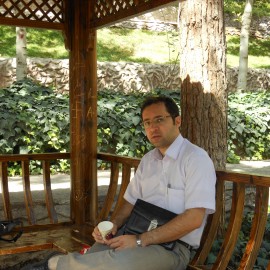 Alireza Shamkhalchian Alireza Shamkhalchian
Alireza graduated in 2008 from Ferdowsi University of Mashhad in Iran with a master degree in the field of Hydraulic Engineering.
From 2008-2014, he worked for a consulting Engineering company where he experienced different responsibilities including expert, project manager, manager of Hydraulic unit and managing director.
Completing his MSc course, Alireza maintained his communication with academic areas. Accomplishing a research project with his MSc University, teaching in various universities, publishing several papers in conferences and journals are examples of his academic activities.
In 2015, he was accepted as an IPhD student in the University of Southampton. His prior research is in numerical modelling of open channel flows which he has studied since his the start of his MSc and which remains a great source of interest. Currently he is focused on ‘Developing high performance numerical models for large-scale flood inundation problem’.
Project Funders: CH2MHill
Project Details: Flooding from extreme events is a matter of increasing concern. In particular, over the last decades floods have killed more people than any other natural hazard worldwide. In the UK it is estimated that 5M people are at risk from flooding.
Our current ability to predict and mitigate flood risk is strongly reliant on the capacity to accurately model flood inundation and propagation over the land surface. However, the complexity of many flooding problems very often requires flow simulations that span far beyond the areas where the hazards occur, entailing model simulations covering extremely large areas. In addition, a variety of processes occurring during the flood propagation can only be accurately captured with (at least) 2D models operating at high resolution. These particular requirements result in extremely high computational costs, which impose a clear barrier for a range of applications aimed at understanding, predicting and mitigating large-scale flood problems. The development of high-performance flood inundation models is expected to pave the way to a wide range of key applications that so far have been hampered by the unfeasibly high computational times needed.
This project will focus on the development of innovative numerical methods to model large-scale flooding problems at high-performance with physics-based hydraulic models (i.e. based on the shallow-water equations). Particular focus will be given to efficient use of fine resolution topography at all stages of model development, from the first steps of model conceptualization and formalization to the final implementation. Attention will also be given to techniques of parallel computing using HPC resources available at the University of Southampton (http://cmg.soton.ac.uk/iridis).
|
Fundamental Insights into Sediment Transport
 Will Crawford-Jones Will Crawford-Jones
I studied Civil Engineering at The University of Exeter between 2010 and 2014, gaining an MEng in Civil Engineering. I then immediately went on to work for the engineering company MWH Global for 3 years before moving back to academia to work within SIS (Sustainable Infrastructure Systems) on my project titled Fundamental Insights into Sediment Transport, with supervision from Dr. Sergio Maldonado Villanueva and Dr. Gustavo de Almeida.
Project Funder: EPSRC
Project Details: Quantitative prediction of sediment erosion and accumulation rates is crucial for many applications in Civil and Environmental Engineering, including dam silting and bridge scouring, to name just a few.
However, when compared to the study of pure water flows (hydrodynamics), our knowledge of the interaction between fluids and sediment is very limited, and heavily relies on empirical methods. We thus propose to generate fundamental insights into the field of water-sediment flows in order to improve our predicting capabilities and engineering tools.
Our understanding of initiation of sediment motion in open channels is largely based on empirical studies carried out in the 1930’s by Shields. Shields concluded that sediment motion begins when a critical shear stress, τc, is reached. However, this approach has been criticised ever since, due to its well-known unreliability.
Recent research has shifted towards an approach where the problem is studied at the scale of sediment particles, with promising results.
The aims of this PhD project are to:
- Study the process of initiation of motion using a theoretical approach, that is, reducing our reliance on empirical coefficients as much as possible
- Use highly controllable experimentation to further back (or otherwise) conclusions made at a theoretical level
- Confirm the findings of more recent studies that suggest impulse (i.e. time integral of force) is a more accurate means of predicting sediment transport
- Vary size, shape, packing arrangement and other relevant parameters to establish their effect on sediment particle entrainment.
|
Development of behavioural deterrents to protect the European eel at dams and power stations
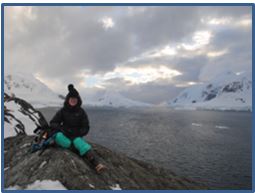 Mhairi Miller Mhairi Miller
I graduated with a BSc (Hons.) in Zoology from the University of St Andrews in 2015. I then studied for an MRes in Ecology, Evolution and Conservation at Imperial College London in 2016/17. In 2017, I started my PhD in Sustainable infrastructures at Southampton.
My interests primarily concern behavioural ecology and testing behavioural responses of species to address larger evolutionary and ecological concerns.
Project Funders: EPRI, RWE npower
Project details: The European eel (Anguilla anguilla) has become a conservation concern due to the rapid and sustained decline of population numbers. Consequently, all water abstraction points are required to have screening systems to prevent ingress of adult and juvenile eels. However, these mechanical screens are not suitable in preventing the narrow, long bodied small juveniles (elvers) from entering. As a result, these eels suffer high mortalities due to impingement under high velocities. In addition, screens can often be expensive and therefore there is a growing need for more effective and suitable prevention strategies. Behavioural deterrents that use abiotic stimuli might provide a cost-effective alternative to physical screens. This study will firstly test the fundamental behavioural responses of eels to a range of abiotic stimuli such as bubbles, sound, light and electric fields. Further work will explore the effect of multi-modal behavioural stimuli with the aim to design novel behavioural devices which are effective in the real world. |
Managing Emerging Pollutants in Wastewater Systems
 Freya Radford Freya Radford
In 2015 I graduated with a BSc in Marine Biology from Plymouth University, where I specialised in pollution of the marine environment. After graduation, I worked in in industry for two years as an Aquatic Ecotoxicologist, assisting with lab and outdoor mesocosm studies. In 2017, I started a PhD in Sustainable Infrastructure Systems at the University of Southampton.
My research interests cover environmental pollution, specifically the impacts of anthropogenic pollutants on aquatic ecosystems. This project will focus on Microplastics in Wastewater treatment systems and developing our knowledge of Microplastic pollution in freshwater and terrestrial environments.
Project Funders: Southern Water
Project details: In collaboration with Southern Water, this EPSRC Centre for Doctoral Training in Sustainable Infrastructure Systems (CDT-SIS) funded PhD studentship will investigate Microplastic pollution in association with the Wastewater treatment system.
Microplastic pollution is becoming an ever increasing environmental concern and while the main bulk of research has been done in the marine environment, little is known about the effects and abundance in freshwater and terrestrial systems. It has recently emerged that Microplastic removal is a significant issue in the Wastewater treatment process, particularly as a source of plastic pollution to the environment. This project will focus on the fate and levels of Microplastics in these systems and develop methods to control and reduce the pollution. The major focus will be on understanding the pathways of pollution and developing treatment strategies to remove Microplastics from these systems. Overall, it will aim to advance methods that will upgrade the Wastewater treatment process and reduce the environmental risk posed by Microplastics. |
Exploring the relationship between river restoration and flood risk management
 Lewis Dolman Lewis Dolman
I graduated in 2017 from the University of Nottingham with an integrated MSci degree in Zoology. Here, I concentrated on ecology and animal behaviour within aquatic systems, particularly in the context of future changes caused by climate change and other anthropogenic impactors. For example, one of my projects investigated how future climatic changes will impact behavioural decisions within riverine invertebrates.
I joined the 4-year CDT-SIS programme at the University of Southampton in September 2018, during which I will continue investigating river ecology and human-caused impacts on these systems.
Project Funders: EPSRC and The Environmental Agency
Project details: UK river systems have been modified by humans for a multitude of reasons (e.g. flood risk mitigation, hydropower) for millennia. Widespread efforts to restore rivers to a more natural condition (e.g. by reinstating meanders, enhancing instream structural complexity and removing infrastructure) for the purpose of enhancing ecological condition also have the potential to reduce flooding risk.
Working in close collaboration with the Environment Agency, this project will use case study examples to explore the hydrogeomorphological and ecological responses of rivers to restoration projects. State of the art technology, including Acoustic Doppler Current Profiler (ADCP) to map bathymetry and velocity, will be employed to quantify the physical, chemical and ecological responses to restoration activity. Further, modelling approaches will be employed to assess flood risk pre- and post-restoration for different projects.
More specifically, it is anticipated that this project will investigate: (1) short-term (< 1 year) and long-term (> 5 years) responses of fish and invertebrate populations to restoration projects, (2) how restoration enhances the capability of rivers to hold /reduce the impacts of water duringflood events, (3) how geomorphic complexity relates to the persistence of communities during flooding events. |
Development of behavioural deterrents for power stations
 Amelia Holgate Amelia Holgate
Project funders: EPSRC
Project Details: Impacts from low and high head hydropower structures have been well documented and include complications such as altered flow regimes, altered sediment regimes and biodiversity loss, particularly amongst freshwater fish. The hydropower turbines part of these hydropower structures cause fish mortality due to changes in pressure, cavitation, turbulence and shock. Hence, technology which deflects fish from stressors which may harm, damage or injure them is an appropriate solution.
Acoustic deterrents are species specific, since the success depends on the hearing capabilities of the species. Methods generally used involve pure tone, pulses or chirp signals produced by an underwater transducer. However, poor documentation of methodology highlights the need for improved communication and interdisciplinary understanding. Additionally, quick habituation of some species to pure tone signals has been documented in the literature, so broadband sound may be more effective.
Initial thoughts regarding avenues for research include: Use sound characteristics akin to those found in nature to improve existing acoustic deterrents; to focus on neotropical species, since these species are considered high risk due to an increase in high head dam creation. |
Investigating novel uses of electricity in freshwater ecosystems
 Jack Daniels Jack Daniels
I graduated from the University of Bristol with a BSc in Zoology in 2018. While completing my degree, I was involved in a variety of research projects ranging from camouflage to freshwater ecology, and also worked with several conservation organisations.
I joined CDT-SIS at the University of Southampton in September 2018, with the aim of improving techniques to mitigate the impacts of anthropogenic effects on freshwater ecosystems.
Project Funders: CDT-SIS & EPRI
Project details: River ecosystems are facing a variety of threats due to anthropogenic interference, and current research is focusing on engineering methods to mitigate these impacts. One of the most promising solutions is the use of electricity, which may help to reduce the impacts of river infrastructure on fish, and provide a method of controlling the movement of invasive species.
Recent work has suggested that electric barriers could be used to control the movements of fish at hydropower facilities, potentially providing a means of increasing habitat connectivity and fish survival. Future work will focus on quantifying the efficacy of these barriers, and enhancing their effectiveness by determining the impacts on different species.
A particularly interesting use of these barriers is the control of the movement of freshwater invasive species. Research in this area is currently very limited, but future work will focus on the possibility of species-specific barriers, and integrating these barriers into effective management plans. |
3D Mapping of Geometrically Complex Seafloor Infrastructures using Marine Vehicles
 David Stanley David Stanley
I graduated from the University of Southampton in 2018 with an MEng in Mechanical Engineering / Mechatronics, having previously worked as an undergraduate systems and test engineer for a company developing hybrid vehicle powertrain products.
Project Funders: Biocam and EPSRC
Project Details: Photographic seafloor surveys using unmanned robotic vehicles are now routine. Analysis of the reconstructions produced can be used to track infrastructure deformation through time and document the impact of human activity and disasters on marine ecology. But any artefacts and inconsistencies in the reconstructions can be hard to identify, potentially leading to misinformed decisions.
A current setup used is ‘structured light’. This combines lasers with cameras, where observations use sensor calibrations and are fed forward through models that estimate vehicle position, to create 3D scenes. However, even small uncertainties in the setup and sensor noise can lead to large visual and shape imperfections.
My project aims to improve the consistency of 3D reconstructions by feeding back the shape and visual features from multi-pose images and structured light, and to enable exploration (visualisation) and interrogation (measurements, semantic overlays) of multiple reconstructions. The novel approach will be to:
- Match together revisited features using particle filter SLAM (simultaneous location and mapping) for the structured light setup, updating considered position and constructed map.
- Quantify uncertainty in the lens and laser models to apply constrained bundle adjustment, using multiple sets of colour and laser data for the same features to adjust parameters for maximum consistency.
- Combine the two approaches for a complete closed loop approach to structured light seafloor mapping.
|
Hydrant Dynamics for Leak Detection
Rahma Nassoro
 I graduated with a BSc in Chemistry in 2018 from the University of Southampton. Throughout my undergraduate degree I was interested in ways to conserve natural and renewable resources. I joined the leak detection project after graduating as its fundamental aim is to conserve water which is a very important resource in daily life. I graduated with a BSc in Chemistry in 2018 from the University of Southampton. Throughout my undergraduate degree I was interested in ways to conserve natural and renewable resources. I joined the leak detection project after graduating as its fundamental aim is to conserve water which is a very important resource in daily life.
Project Funders: UKWIR (UK Water Industry Research)
Project details: Leakage from pipes is a major issue in the water industry. The UK Water Industry Research (UKWIR) have recently set up the Zero Leakage 2050 initiative that aims to address ‘How will we achieve zero leakage in a sustainable way by 2050?’
Acoustic methods predominate in the available leak detection methods, but their effectiveness is restricted for plastic pipes due to the high attenuation of the acoustic signals. One of the reasons for this is that much of the acoustic signal can be lost when travelling from one pipe to the detection sensor that is usually located on the hydrant. Recent measurements suggest that a resonance of the pipe system at the points where the sensors are attached usually a hydrant, can have a profound effect on the bandwidth of the measured leak noise.
The aim of the project is to investigate hydrant dynamics, so that new guidelines can be given for sensor numbers, type, and positioning and hydrant design. The project entails:
- Theoretical modelling of vibrational wave propagation in hydrants
- Laboratory measurements on simplified hydrants
- Laboratory and field measurements on real hydrants
|















